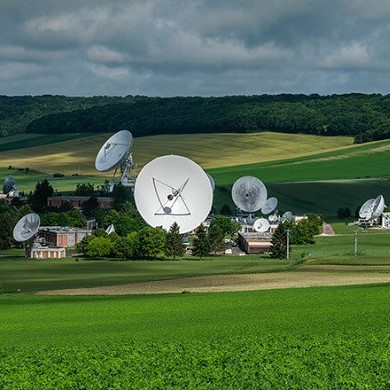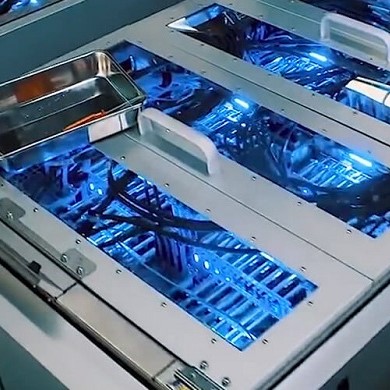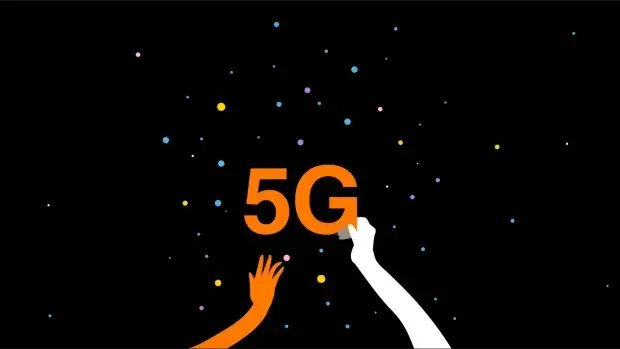To travel from one city or country to another, data takes the highway – just like the rest of us! Global communications are based on high capacity long-distance carrier networks. We’re one of the main operators of these national, international and sometimes even intercontinental “information superhighways”.
National networks
In each of our operating countries, we maintain a national network to connect towns and cities. The national network is then connected to the rest of the world, transporting voice and data traffic over long distances. It mainly employs optical fibres but can also rely on radio links between satellite dishes – especially in countries where terrestrial networks are not so well developed and where customers are more reliant on mobile communications.
Connecting continents
We’re one of the major operators able to connect long-distance networks between countries, in particular when it comes to submarine cables, which support the majority of intercontinental communications today. We have deployed 188,000km of our own cables and have a stake in around 450,000km in total, enough to travel 10 times around the world.
To build out these submarine cable networks, we partner with various stakeholders including other operators, private companies and major internet service providers. We contribute to 50 different consortia covering various routes, from the North Atlantic and the Caribbean to Europe-Asia and Europe-Africa.
Data in space
In addition to our terrestrial and submarine cables, we’re also using satellite communications to offer certain services (such as our business customers’ maritime fleets) and to connect remote sites across Africa. We lease capacity from satellite operators such as Eutelsat, Intelsat, SES and Arabsat.
Welcome to Orange’s teleport!
Teleports are terrestrial sites equipped with large satellite dishes, which provide a gateway between communication satellites and the terrestrial “backbone”. We operate one of the largest teleports in Europe at our Bercenay-en-Othe site in France. The site has more than 30 antennas, three of which are over 30 metres high.
The network brain
Data centres collect, store, process and deliver our customers’ data across our various networks. We own 75 data centres across all our main operating countries in Europe, Africa and the Middle East. If telecommunications are a bit like a nervous system comprising cables and radio links, data centres act as a type of “brain”. This is where we manage all of our customers’ traffic and store their data in thousands of servers. We invest heavily each year to make sure our data centres are using the latest technologies while increasing capacity and improving energy efficiency.
Eco-designed data centers
At the end of 2020, we opened our third eco-designed data center, which is groundbreaking in terms of performance, near the city of Chartres in France. . Awarded ISO 14 001 and ISO 50 001 environmental certifications, the site belongs to a new generation of data centres that apply “free-cooling” technology to optimise energy efficiency. The process uses fresh ambient air to cool the servers for 11 out of 12 months of the year, reducing the need for artificial air conditioning 80% of the time. In 2022, we put two new data centers into operation, in Amilly in the Centre-Val de Loire region and in Val-de-Reuil in Normandy, where a first data center has been in operation since 2012.






